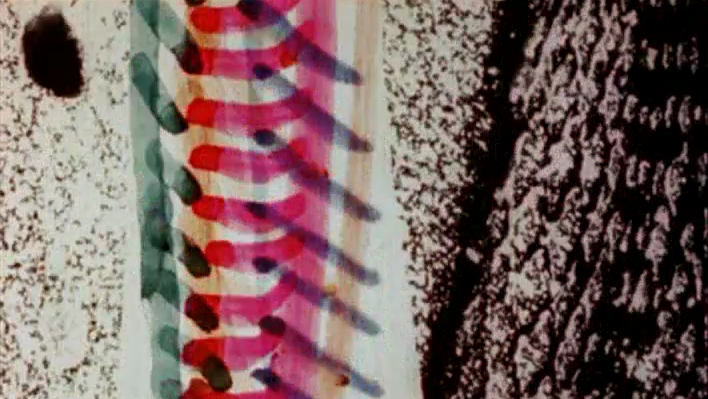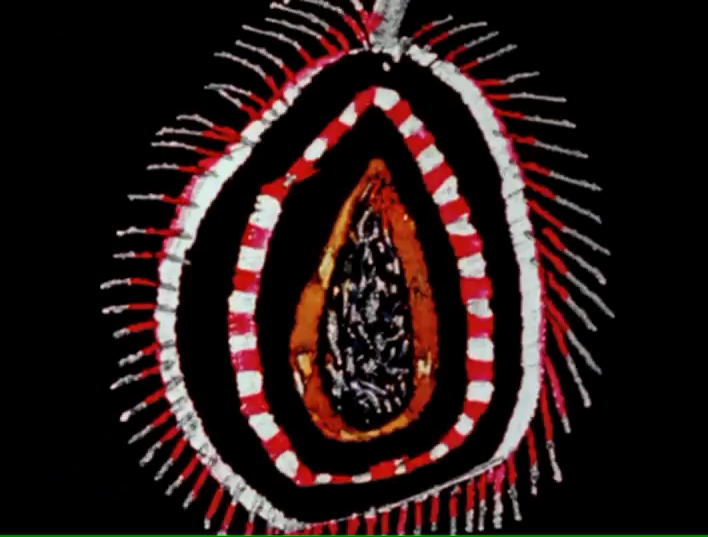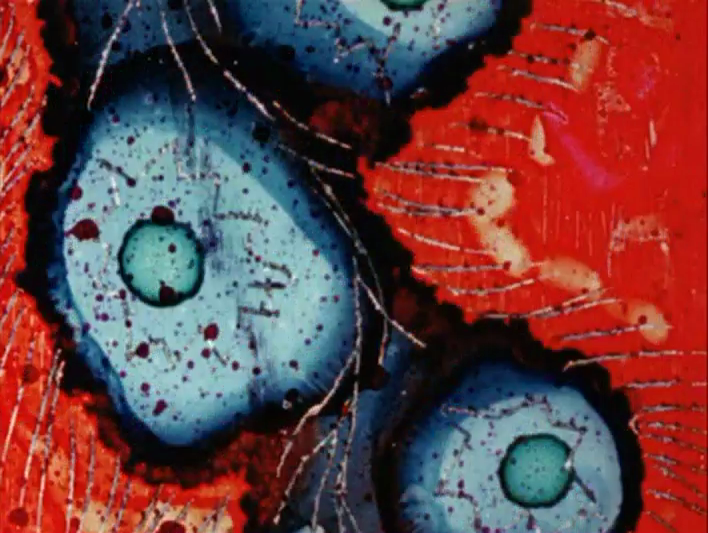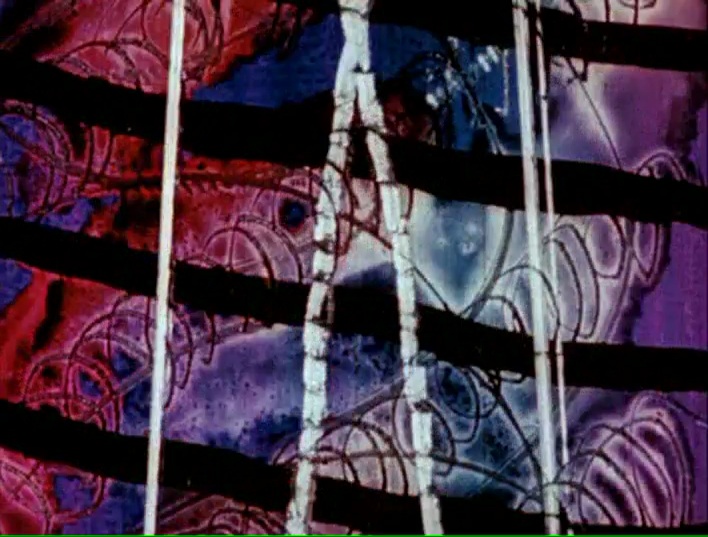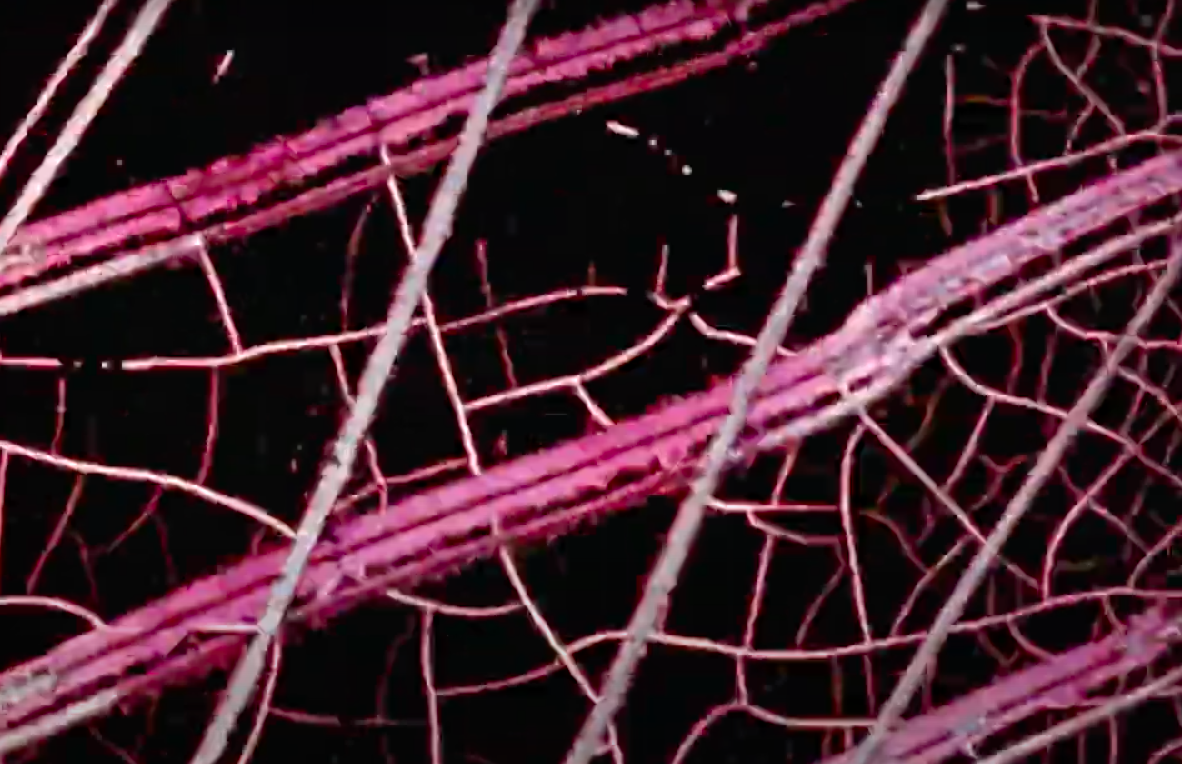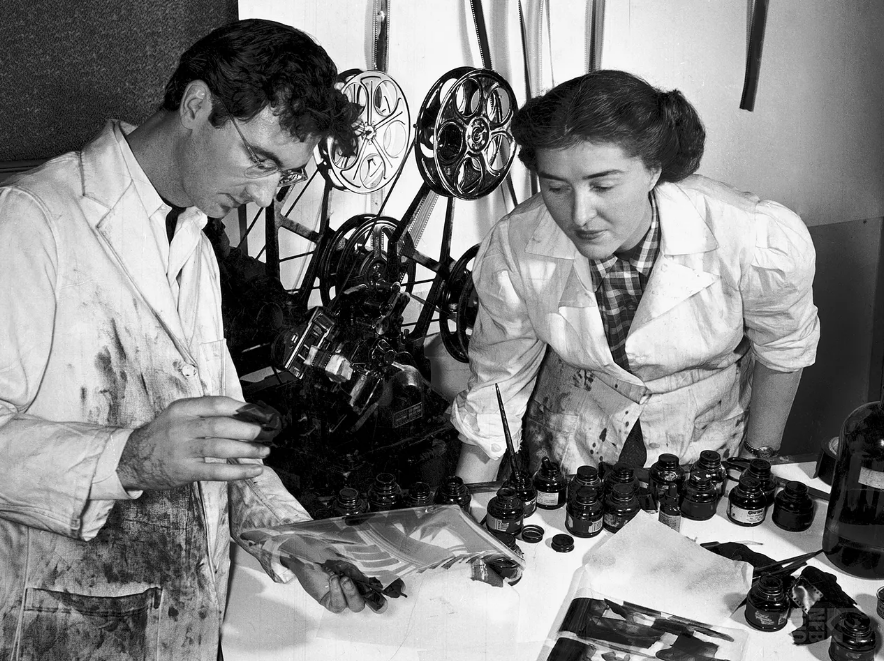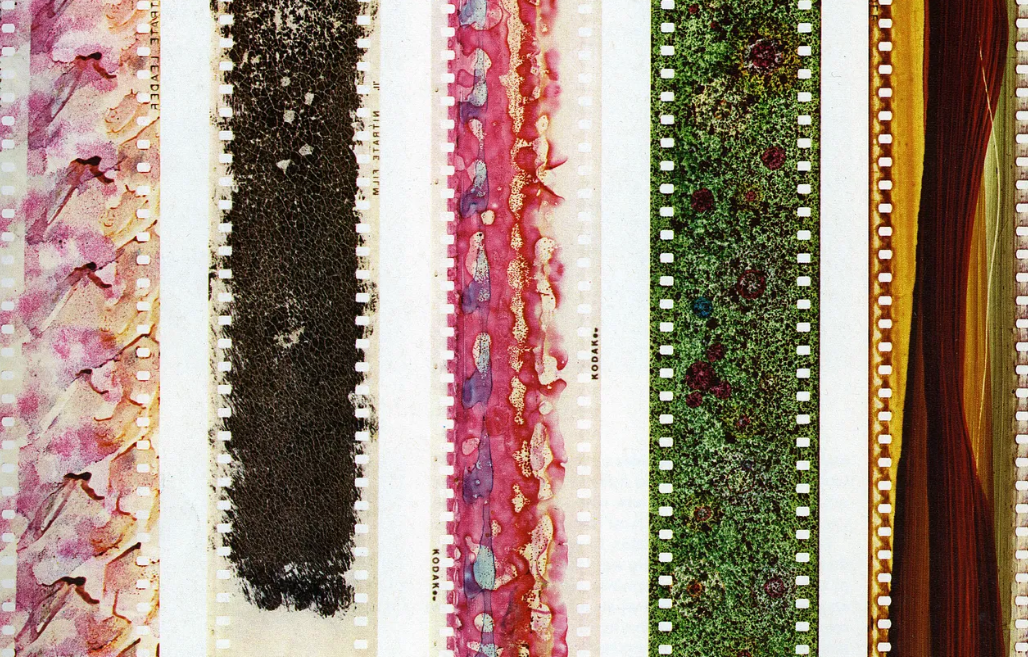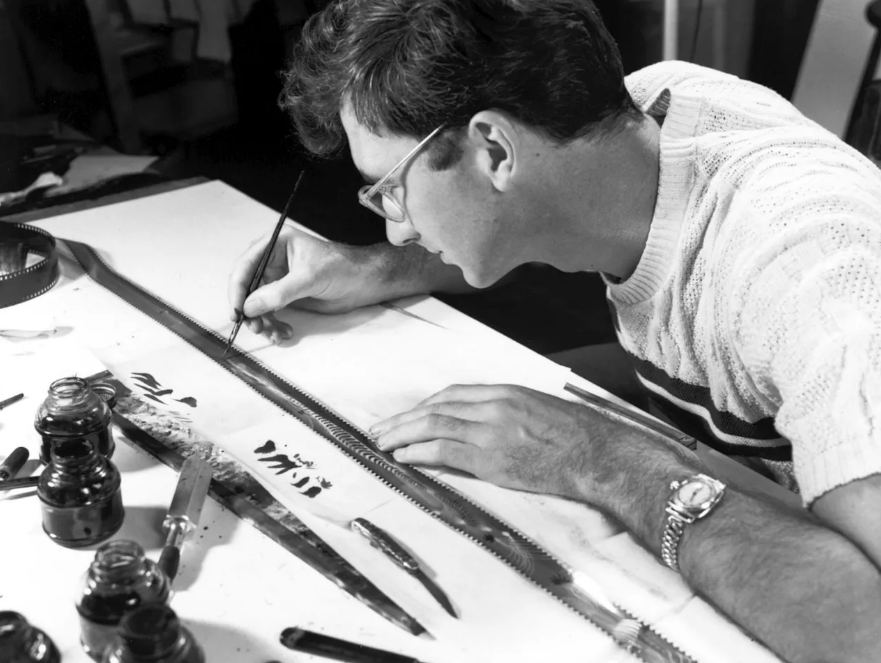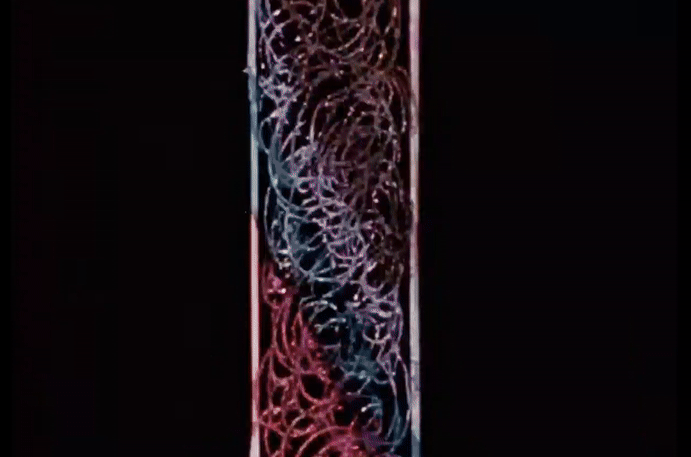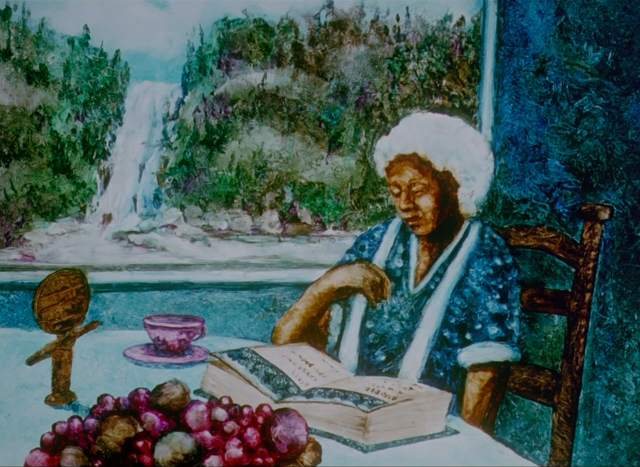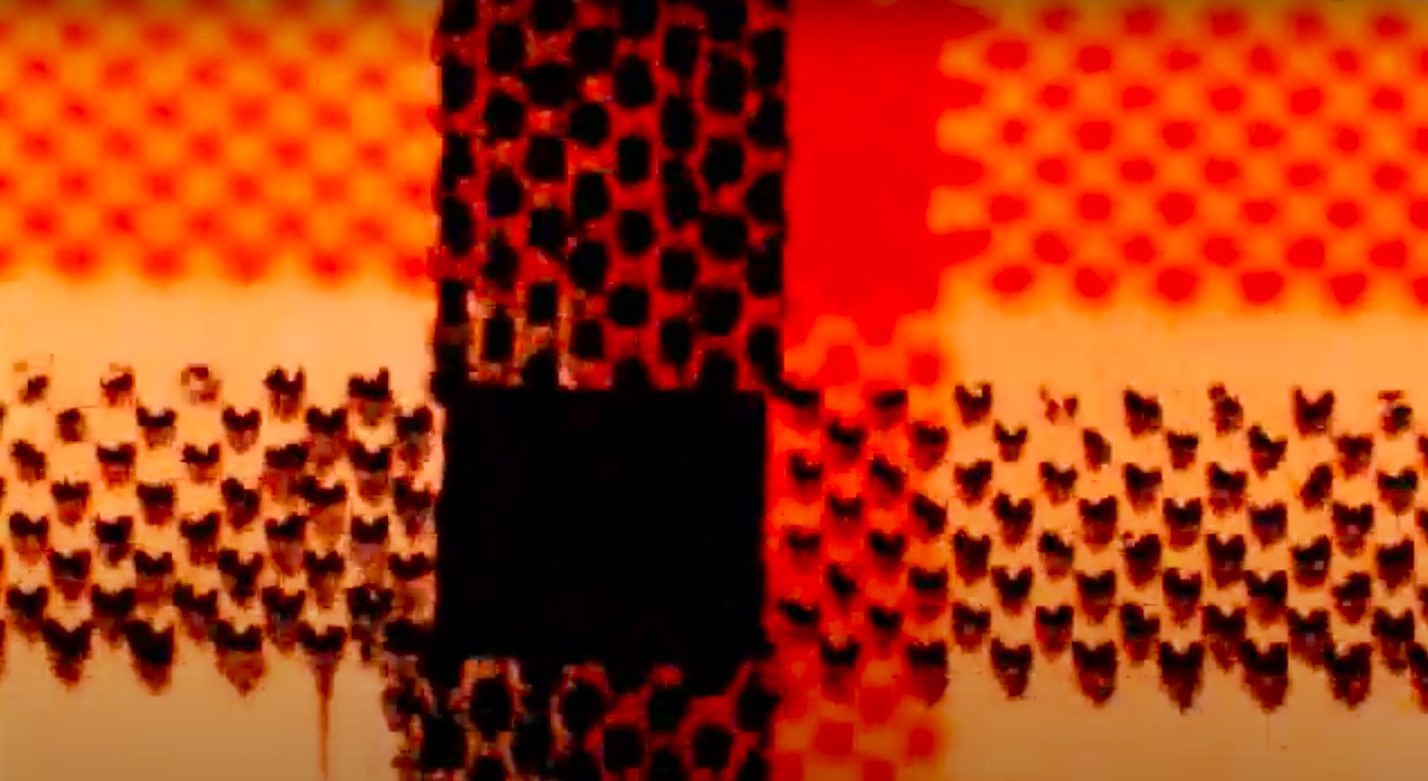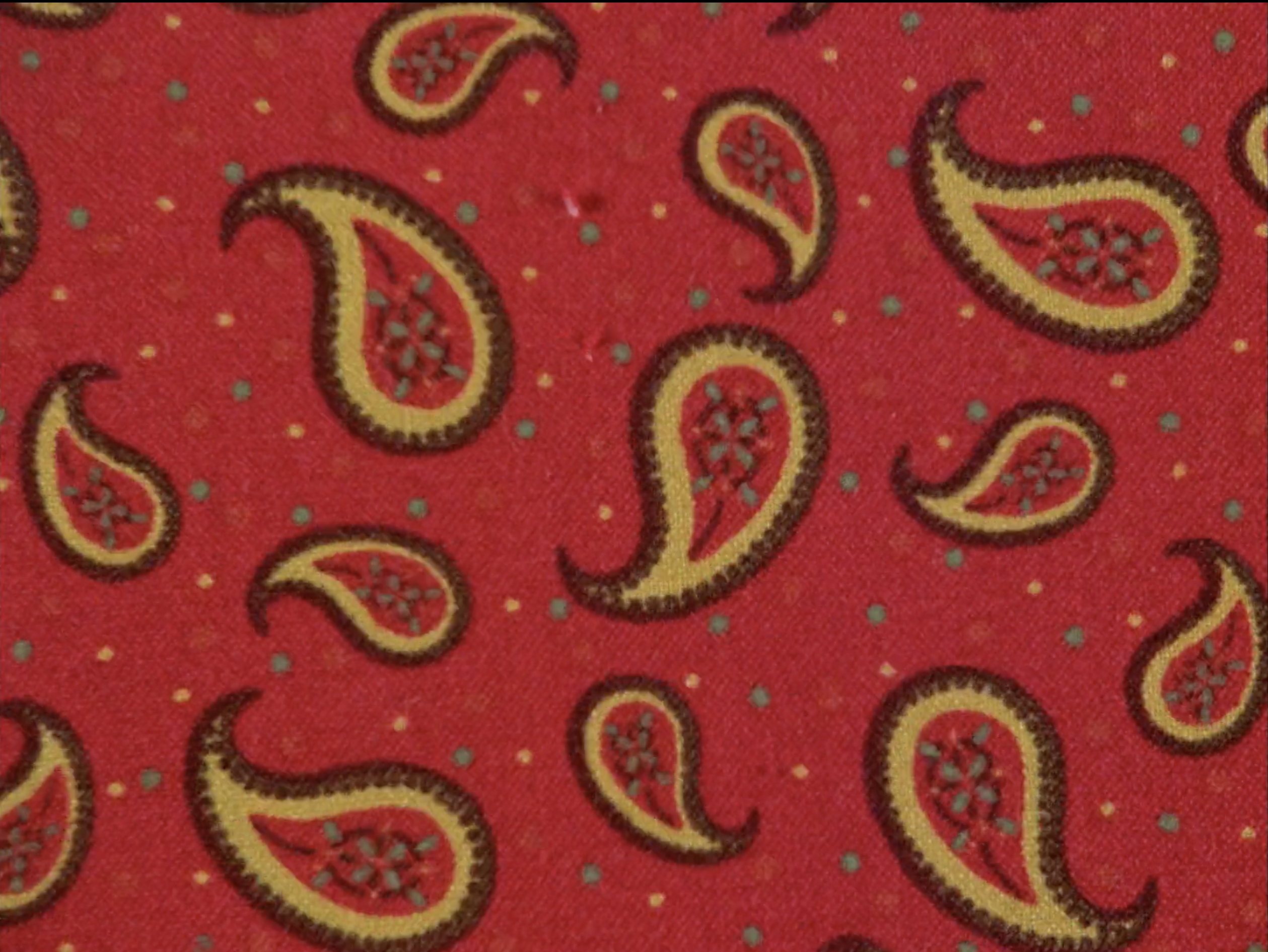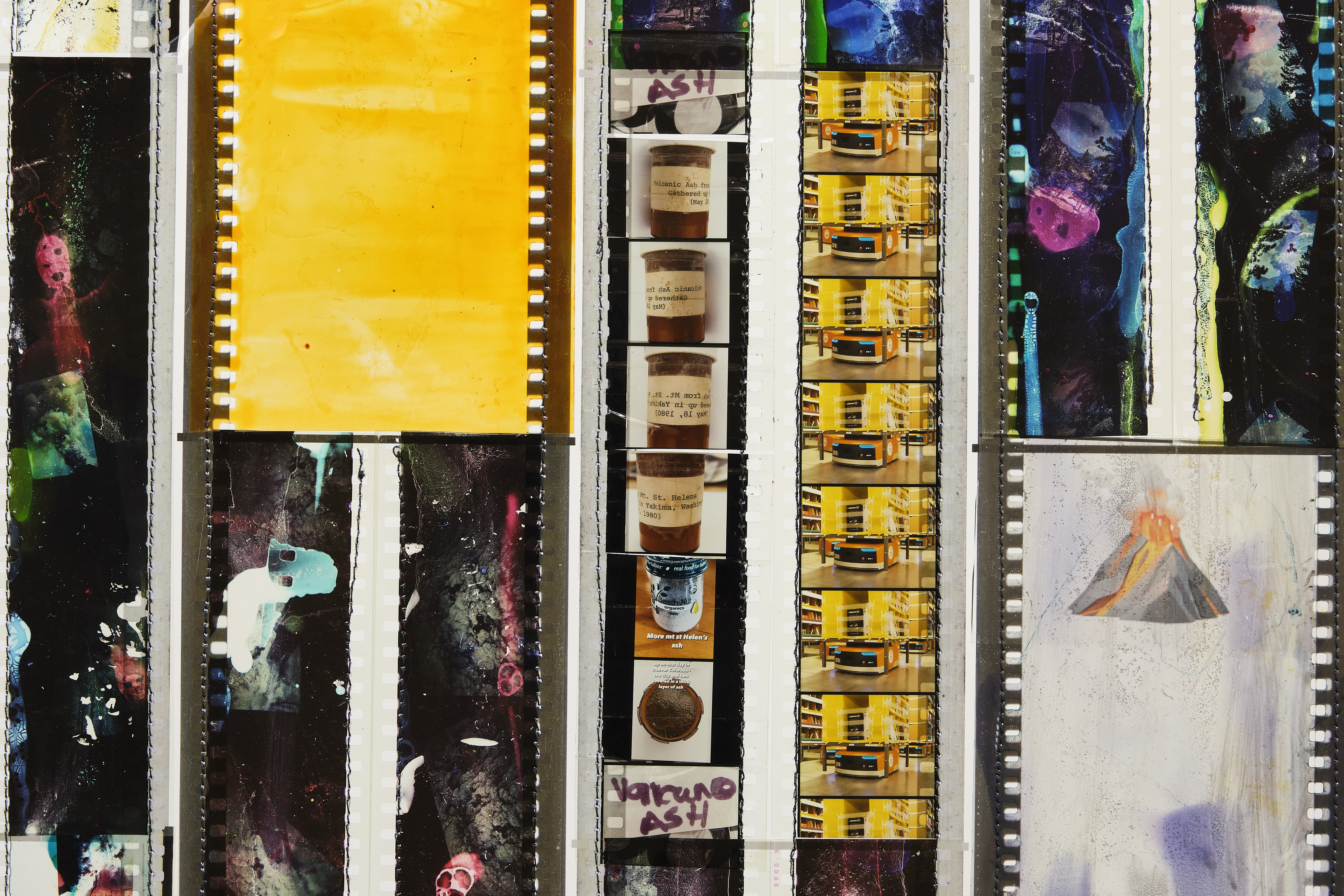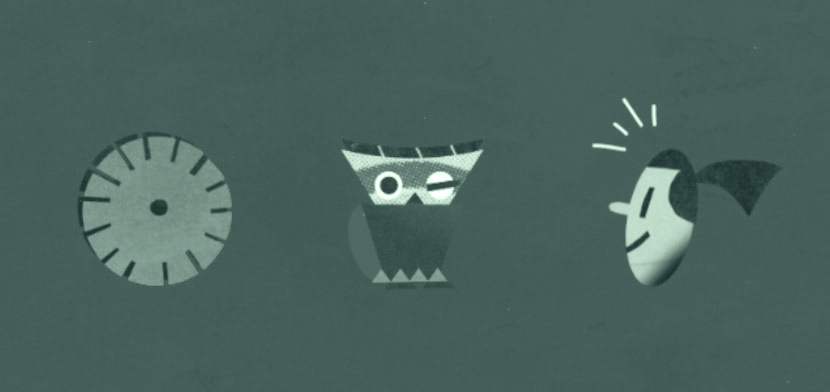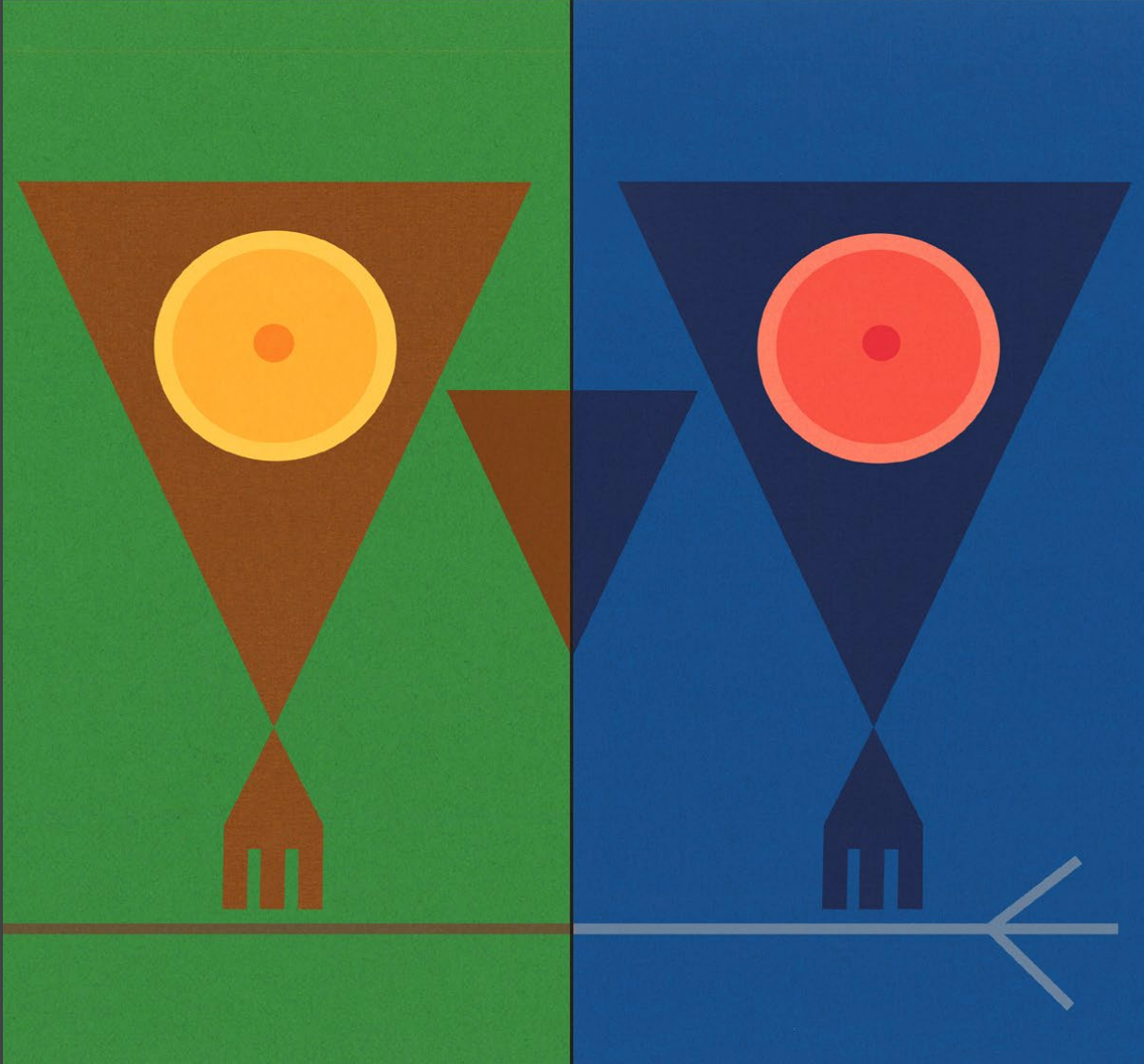Notes on the film
The film is a polychromatic visual companion to a jazz soundtrack by the Oscar Peterson Trio, painted and doodled directly on celluloid using a range of direct animation techniques. Using techniques like applying thick brushstrokes to moving film and marbling India ink with specks of dust, the artists worked intuitively to develop images reactive to the motion of the music. The variety of optical and textural effects in the animated sequences capture both the exuberant chaos and the pensive calm of the musical composition. Following the spirit of jazz, this film is a virtuosic performance of drawn animation with an improvisational approach.
The film captures the syncopated accents, shifting tempos, and tonal inflections of Peterson’s jazz soundtrack, transforming each musical passage into a kinetic burst of rhythmic imagery. To create a graphic score for the film, McLaren and Lambert stretched clear celluloid strips across a 12-inch board and used an oscilloscope to map out the vibrations of the sounds in relation to the filmstrip. This allowed the artists to directly follow the tempo of the music, while making room for visual improvisation. This process, which McLaren described as “wild folk dancing,” involved significant experimentation with materials and processes. For example, when working on a segment involving wet India ink, dust began to settle on the film strip. This resulted in the ink cracking and separating from the dust – a crackling effect which the artists liked and decided to replicate throughout the film. For other sections of the animation, the film was run through a moviola editing device, which allowed painting and scratching to take place directly on a moving strip as the artists listened to the soundtrack’s spirited piano runs, walking bass, and crisp percussion.
Unpredictability lies at the heart of a glitch, which is particularly pronounced in AG-MX70plus #2, since the piece unfolds live. The animator-as-VJ drives the equipment into unstable territory, welcoming unpredictable feedback and flirting with the edge of technical failure. The recording opens with a continuous static hiss, echoed by stacked black‑and‑white lines. After a tense build‑up, the lines fill the frame, triggering abrupt shifts in volume and pitch. A cyclical pattern of suspense and release recurs throughout, keeping the audience also on edge.
white lines manually incised onto film emulsion register a delicate performance of drawn animation that accompanies a slower musical passage
In a 1955 interview, Norman McLaren described a range of implements used to apply fast-drying paint (Craftint) to celluloid to create more improvisational textures and patterns:
A tooth comb, ball bearings, lace, hair nets and gear wheels also were used in applying the paint. An ordinary fly spray gun shot the stuff onto the film through everything from dish cloths to chicken wire to give different textures. Some of the film was sandpapered before the paint was applied to give a smoky result. Doodling with a pointed knife on a layer of paint was tried, and found successful. Both acetate and nitrate stock were used, and every surface reacted differently to the paints.
American Cinematographer on McLaren
For more information on Mclaren’s process and techniques
Movies without a camera“On The Creative Process”
A short book written by Norman McLaren about his creative process
On the creative processA review of Begone Dull Care
This review gives more details on the materials and techniques used in the animation
Review of Begone Dull Care